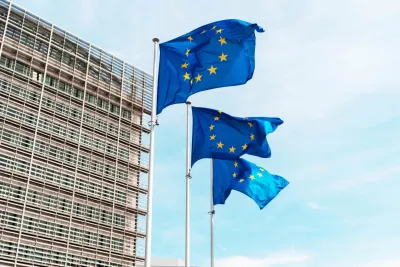EU intensifies its payment strategy, and sets new standards

To innovate and grow, industries need private investment and support from public authorities, governments, and regulators. The payments industry is no exception. Europe leads the way in fintech, benefiting from initiatives like the Payment Services Directive 2 (PSD2) opening up the landscape to new players. And this is just a taste of what’s to come, as authorities and senior stakeholders ramp up their strategic frameworks for innovation.
Retail Payments Strategy (RPS) and European Payments Initiative (EPI)
The RPS and EPI are just two examples of many upcoming EU payments strategies. The RPS is a policy framework, which supports the development of EU retail payments and digitalisation. It is centred on creating a “customer-centric, modern, competitive and innovative payments ecosystem” for the retail sector, promoting cross-border solutions, developing an innovative payments market, building infrastructure, and supporting the international role of the euro.
The EPI is a little different. This initiative is driven by 20 major banks across multiple European nations, and it is designed to forge a path towards a collective Europewide scheme rivalling Visa and Mastercard – eventually replacing local schemes such as Germany’s Girocard and France’s Carte Bancaire. It has support from the European Commission, the European Central Bank (ECB), and other key authorities that have influence within the EU payments industry.
Both of these initiatives have been designed to simplify and enhance the payment experience for consumers, and to set the standards for upcoming innovation in the industry.
Coronavirus has put extra pressure on regulators to adapt
With the onset of the COVID-19 pandemic, regulators experienced some of their existing plans being jeopardised. For example, there were strong calls from merchants and issuers to delay enforcement of PSD2’s Strong Customer Authentication (SCA) in online payments. The UK’s Financial Conduct Authority (FCA) agreed to push this enforcement to later in 2021, but the European Commission kept to their deadline of 31st December 2020.
Put simply, this means that card issuers must now decline an online transaction if the customer doesn’t provide two-factor authentication. Many major online payment solutions are already compliant with this, but merchants may need to check that their third-party providers are up-to-date. This is one of the biggest regulatory developments in online payments for years.
Coronavirus has also affected official policy on in-store payments. For example, governments have supported banks across Europe in raising the maximum limits for contactless payments, with the aim of encouraging safer physical transactions. It will be interesting to see when, or if, these limits are reestablished as the pandemic fades over time.
“The EU is particularly active in the realm of payments, and we welcome the energy that these initiatives bring. Ultimately, the mission of the payments industry is to make payment seamless, friction-free, and simple for the end consumer.”
Guido Lamers
CCV Lab Manager at CCV
“Regulators play a huge role in making sure dynamic innovation isn’t detrimental to security, usability, or industry competitiveness. They help set the right standards, and this gives innovators a platform to work from. And we expect more of this activity in the near future.
The EU is particularly active in the realm of payments, and we welcome the energy that these initiatives bring. Ultimately, the mission of the payments industry is to make payment seamless, friction-free, and simple for the end consumer. Ultimately, all parties, private and public, have ambition to boost commerce, support economies, and help businesses to thrive across the European continent.”
Learn more? Read more about 2021 Payment Trends in our CCV Pulse
Discover the full report!